Plant Combinations, Flowerbeds Ideas, Spring Borders, Summer Borders
Over the past ten years, the number of Allium varieties has exploded. Where a decade ago, only ten varieties dominated the ornamental onion scene, today, there are more than a score. It’s enough to bring tears to your eyes. Distant cousins of garlic, Alliums are sometimes called ornamental garlic or flowering onion. While these names convey the Allium’s bulbous nature and slightly strong scent, they fall short of communicating the exuberant good looks of this sexy, sophisticated plant group.
Following are some inspired Allium and perennial combinations, some created by Dutch master landscape artist and designer Piet Oudolf. His plant combinations demonstrate his skill in selecting season-spanning plant partnerships that bring ebbs and flows of interest to the garden over long seasons. His forte is selecting individually-interesting plants that, when planted together, create exquisite combinations that surprise and delight via their interplay of foliage, form, and flower color, with height, texture, movement, bloom, and after-bloom aspects taken into account.
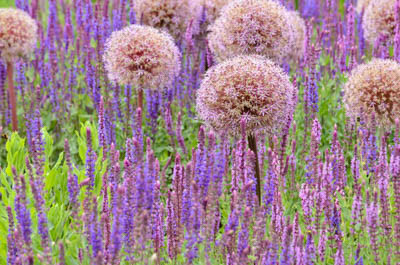
Allium and Salvia (Sage) |
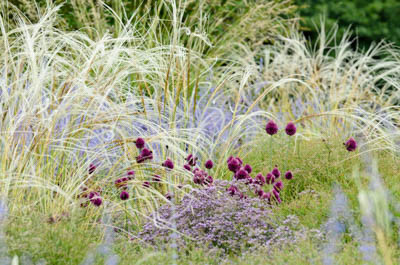 Allium sphaerocephalon (Drumstick Allium), Stipa barbata (Feather Grass), Perovskia abrotanoides (Russian sage) Allium sphaerocephalon (Drumstick Allium), Stipa barbata (Feather Grass), Perovskia abrotanoides (Russian sage) |
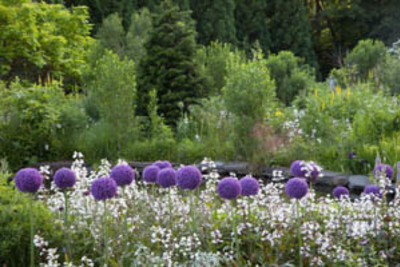
Allium, Penstemon digitalis (Beardtongue) |
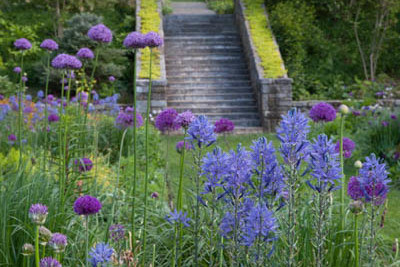
Allium, Camassia leichtinii (Quamash) |
.jpeg)
Allium, Aquilegia (Columbine) |
.jpeg)
Allium, Papaver (Poppy) |
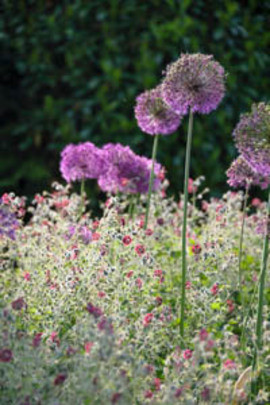
Allium, Geranium phaeum (Dusky Cranesbill) |
| Plant Type | Bulbs |
|---|---|
| Genus | Allium |
| Attracts | Bees |
Photos: Botanik Foto, Chanticleer Garden
| Plant Type | Bulbs |
|---|---|
| Genus | Allium |
| Attracts | Bees |
Create a membership account to save your garden designs and to view them on any device.
Becoming a contributing member of Gardenia is easy and can be done in just a few minutes. If you provide us with your name, email address and the payment of a modest $25 annual membership fee, you will become a full member, enabling you to design and save up to 25 of your garden design ideas.
Join now and start creating your dream garden!
Create a membership account to save your garden designs and to view them on any device.
Becoming a contributing member of Gardenia is easy and can be done in just a few minutes. If you provide us with your name, email address and the payment of a modest $25 annual membership fee, you will become a full member, enabling you to design and save up to 25 of your garden design ideas.
Join now and start creating your dream garden!